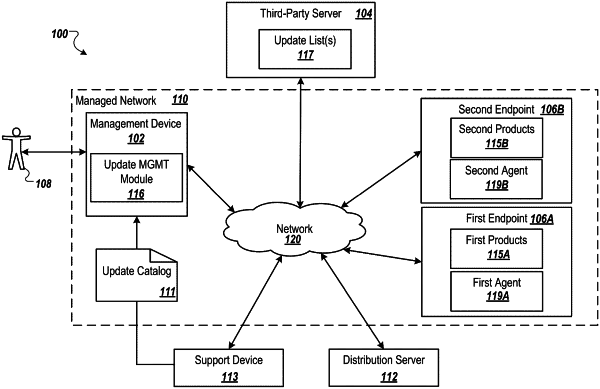| CPC G06F 8/65 (2013.01) [G06F 8/70 (2013.01)] | 20 Claims |

|
1. A method of automated software management of a managed endpoint, the method comprising:
importing update metadata from an update catalog that describes cybersecurity vulnerabilities and product updates;
based on the imported update metadata, generating an initial update list that includes outstanding product updates for a managed endpoint included in a managed network;
discovering products that are loaded on the managed endpoint;
based on discovered products, generating an endpoint-specific inventory that includes product metadata of the products loaded on the managed endpoint;
comparing the outstanding product updates of the initial update list with the product metadata of the endpoint-specific inventory;
based on the comparison, identifying an unnecessary product update, the unnecessary product update including one of the outstanding product updates that is not related to at least one of the discovered products;
filtering the unnecessary product update from the initial update list to generate a modified update list, the modified update list including a subset of the outstanding product updates and omitting the unnecessary product update; and
distributing only the subset of the outstanding product updates of the modified update list to the managed endpoint such that the outstanding product updates are received by the managed endpoint and implemented locally on the managed endpoint to modify at least one of the discovered products.
|